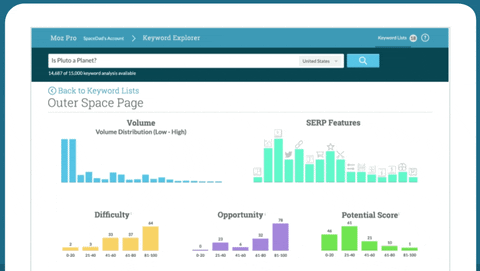When you craft an article, the title serves as the first impression for your readers and search engines alike. It is not merely a label; it is a crucial element that can significantly influence your content’s visibility and engagement. The internet is vast, so countless articles compete for attention. An effective title can be the difference between a click and a scroll.
By optimizing your article titles for search engines, you enhance your chances of ranking higher in search results, which ultimately drives more traffic to your content. Moreover, a well-optimized title can improve your click-through rate (CTR). When users see a title that resonates with their search intent, they are more likely to click on it.
This is particularly important in an era where users are bombarded with information. A compelling title not only attracts readers. It also signals to search engines that your content is relevant and valuable. Therefore, understanding the importance of SEO in article titles is essential for anyone looking to maximize their online presence and reach a broader audience.
Key Takeaways
- SEO in article titles is important for improving search engine visibility and driving organic traffic to your content.
- Incorporating relevant keywords in article titles can help improve search rankings and attract the right audience to your content.
- Utilizing title tags and meta descriptions effectively can enhance the visibility and click-through rate of your articles in search results.
- Creating compelling and click-worthy titles is crucial for capturing the attention of potential readers and encouraging them to click on your content.
- Optimizing title length for SEO can improve readability and ensure that your titles are fully displayed in search results, maximizing their impact.
- Avoiding keyword stuffing in article titles is essential for maintaining readability and avoiding penalties from search engines.
- Testing and analyzing title performance can help you understand what resonates with your audience and make data-driven decisions for future titles.
- Staying updated with SEO best practices for article titles is crucial for adapting to algorithm changes and maintaining a competitive edge in search rankings.
Incorporating Keywords in Article Titles
Understanding the Importance of Keywords
Incorporating keywords into your article titles is a crucial aspect of Search Engine Optimization (SEO) that cannot be overlooked. Keywords are the terms and phrases that users type into search engines when looking for information. By strategically placing these keywords in your titles, you increase the likelihood of your content appearing in relevant search results.
Selecting the Right Keywords
It’s essential to choose keywords that accurately reflect the content of your article while also aligning with what your target audience is searching for. When selecting keywords, consider using tools like Google Keyword Planner or SEMrush to identify popular search terms related to your topic. Once you have a list of potential keywords, aim to integrate them naturally into your title.
This not only helps with SEO but also ensures that your title remains engaging and informative. For instance, instead of a generic title like “Gardening Tips,” you might opt for “10 Essential Gardening Tips for Beginners.” This approach not only includes a keyword but also provides clarity and specificity, making it more appealing to potential readers.
Using Title Tags and Meta Descriptions for SEO
Title tags and meta descriptions play a pivotal role in how your articles are perceived by both search engines and users. The title tag is an HTML element that specifies the title of a web page, appearing in search engine results and browser tabs. It should be concise yet descriptive, ideally incorporating your primary keyword.
A well-crafted title tag can significantly enhance your article’s visibility and clickability. Meta descriptions, on the other hand, provide a brief summary of your article’s content. While they do not directly impact search rankings, they influence user behavior by providing context about what to expect from your article.
A compelling meta description can entice users to click on your link over others. When writing meta descriptions, aim for clarity and relevance while including keywords where appropriate. Together, title tags and meta descriptions form a powerful duo that can elevate your article’s SEO performance and attract more readers.
Creating Compelling and Click-Worthy Titles
Creating titles that are both compelling and click-worthy requires a blend of creativity and strategy. You want to capture the essence of your article while also piquing the curiosity of potential readers. One effective technique is to use numbers or lists in your titles, as they tend to attract attention.
For example, “5 Proven Strategies to Boost Your Productivity” not only indicates that the article will provide actionable tips but also suggests that it will be easy to digest. Another approach is to ask questions or make bold statements in your titles. Questions engage readers by prompting them to seek answers, while bold statements can create intrigue or provoke thought.
For instance, “Are You Making These Common SEO Mistakes?” invites readers to reflect on their practices and encourages them to click through for insights. Ultimately, the goal is to create titles that resonate with your audience’s interests and needs while accurately representing the content of your article.
Optimizing Title Length for SEO
The length of your article title is another critical factor in optimizing for SEO. Ideally, you want to keep your titles between 50 to 60 characters. This range ensures that your title is fully displayed in search engine results without being cut off, which can happen if it exceeds 60 characters.
A concise title not only improves readability but also makes it easier for users to grasp the main idea at a glance. However, while brevity is important, it should not come at the expense of clarity or relevance. Strive to convey the essence of your article within the character limit while incorporating essential keywords.
If you find yourself struggling to keep within this range, consider rephrasing or eliminating unnecessary words. Remember, an optimized title is one that balances length with clarity and keyword inclusion, ultimately enhancing both user experience and SEO performance.
Avoiding Keyword Stuffing in Article Titles

While incorporating keywords into your article titles is essential for SEO, it’s equally important to avoid keyword stuffing. Keyword stuffing refers to the practice of overloading a title with keywords in an attempt to manipulate search rankings. This approach can backfire, leading to poor user experience and potentially harming your SEO efforts.
Search engines have become increasingly sophisticated in detecting such tactics and may penalize sites that engage in them. Instead of cramming multiple keywords into your title, focus on one or two primary keywords that best represent your content.
Testing and Analyzing Title Performance
Once you’ve crafted your article titles, it’s crucial to test and analyze their performance over time. Monitoring how different titles perform can provide valuable insights into what resonates with your audience and what doesn’t. Tools like Google Analytics can help you track metrics such as click-through rates, bounce rates, and average time spent on page, allowing you to gauge the effectiveness of your titles.
A/B testing is another effective method for evaluating title performance. By creating two variations of a title and measuring which one performs better over a specific period, you can gain insights into audience preferences. This data-driven approach enables you to refine your title strategies continually, ensuring that you are always optimizing for maximum engagement and visibility.
Staying Updated with SEO Best Practices for Article Titles
The world of SEO is constantly evolving, with new trends and best practices emerging regularly. To maintain an effective strategy for article titles, it’s essential to stay informed about the latest developments in SEO techniques and algorithms. Following reputable SEO blogs, attending webinars, or participating in online forums can help you keep abreast of changes that may impact how you optimize your titles.
As search engines continue to refine their algorithms, adapting your approach will ensure that you remain competitive. By committing to ongoing learning and adaptation, you can enhance the effectiveness of your article titles and improve overall SEO performance.
In conclusion, mastering the art of crafting SEO-friendly article titles involves understanding their importance, strategically incorporating keywords, utilizing title tags and meta descriptions effectively, creating compelling titles, optimizing length, avoiding keyword stuffing, testing performance, and staying updated with best practices. By focusing on these elements, you can significantly enhance the visibility and engagement of your content in an increasingly crowded online space.
When it comes to implementing SEO best practices, it is important to also prioritize cybersecurity measures to protect sensitive information. One useful tool for enhancing security is LastPass, a popular password manager that offers tips and tricks for optimizing password management.
In this related article on password managers, readers can learn more about the benefits of using LastPass and how it can improve overall cybersecurity posture. By incorporating multi-factor authentication with LastPass, as discussed in another article on multi-factor authentication, businesses can ensure that their SEO efforts are supported by robust security measures.
FAQs
What are SEO best practices?
SEO best practices are a set of techniques and strategies used to optimize a website in order to improve its search engine rankings and increase organic traffic. These practices include keyword research, on-page optimization, technical optimization, and link building.
Why are SEO best practices important?
SEO best practices are important because they help websites rank higher in search engine results pages (SERPs), which can lead to increased visibility, traffic, and potential customers. Following these practices can also improve the user experience and overall quality of a website.
What are some common SEO best practices?
Some common SEO best practices include creating high-quality and relevant content, optimizing meta tags and headings, improving website speed and mobile-friendliness, obtaining high-quality backlinks, and using descriptive and keyword-rich URLs.
How can I improve my website’s SEO?
To improve your website’s SEO, you can start by conducting keyword research to identify relevant and high-traffic keywords, optimizing your website’s on-page elements, improving site speed and mobile-friendliness, creating high-quality content, and obtaining backlinks from reputable websites.
What are some SEO best practices for content creation?
Some SEO best practices for content creation include creating unique and valuable content, using relevant keywords naturally throughout the content, optimizing headings and meta tags, and ensuring the content is easy to read and understand for users and search engines.



